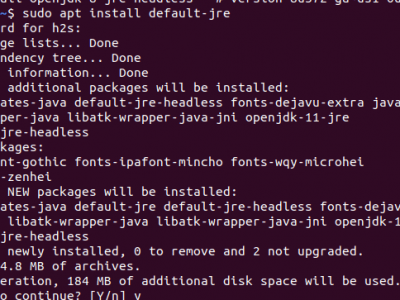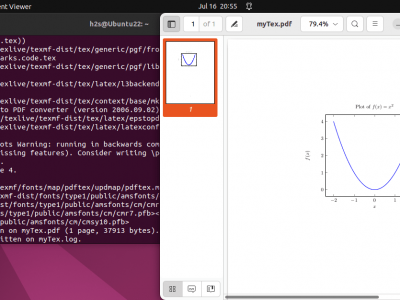三分鐘教你輕鬆掌握 grep 命令中的正則表達式

如何在 Linux 系統和類 Unix 的操作系統中使用帶正則表達式的 grep 命令呢?
Linux 系統自帶了支持拓展正則表達式的 GNU 版本 grep 工具。所有的 Linux 系統中默認安裝的都是 GNU 版 grep 。grep 命令被用來檢索一台伺服器或工作站上任何位置的文本信息。
一、快速了解正則表達式
1、如何匹配你要查找的內容?
正則表達式只不過是每個輸入行匹配的模式。模式是一個字元序列。下面都是範例:
例如:「^w1」、「w1|w2」、「[^ ]」。
在 '/etc/passswd' 中檢索 'vivek' 。
grep vivek /etc/passwd
輸出結果案例:
vivek:x:1000:1000:Vivek Gite,,,:/home/vivek:/bin/bash vivekgite:x:1001:1001::/home/vivekgite:/bin/sh gitevivek:x:1002:1002::/home/gitevivek:/bin/sh
在任何情況下都搜索 'vivek' (即不區分大小):
grep -i -w vivek /etc/passwd
不區分大小寫地檢索 'vivek' 和 'raj' :
grep -E -i -w 'vivek|raj' /etc/passwd
在最後一個例子中,使用了擴展正則表達式的模式。
固定檢索內容的位置:
你可以使用 ^ 和 $ 符號強制一個正則表達式分別匹配一行的開始或結束的位置。下面的示例顯示以 'vivek' 開頭的文本。
grep ^vivek /etc/passwd
輸出結果示例:
vivek:x:1000:1000:Vivek Gite,,,:/home/vivek:/bin/bash vivekgite:x:1001:1001::/home/vivekgite:/bin/sh
你可以只顯示以 vivek 開頭的文本行。舉例說就是不顯示 vivekgite , vivekg 這樣單詞開頭的。
grep -w ^vivek /etc/passwd
檢索以 'foo' 結尾的文本格式:
grep 'foo$' FILENAME
你還可以用下面這樣的方式搜索空白行:
grep '^$' FILENAME
2、如何匹配具體字元?
匹配 'Vivek' 或 'vivek' :
grep '[vV]ivek' FILENAME
或者可以這樣:
grep '[vV][iI][Vv][Ee][kK]' FILENAME
你可以匹配數字(例如匹配 vivek1 或 Vivek2 ):
grep -w '[vV]ivek[0-9]' FILENAME
你可以匹配兩位數(例如匹配 foo11 , foo12 ):
grep 'foo[0-9][0-9]' FILENAME
不僅僅是數字,你可以匹配字母:
grep '[A-Za-z]' FILENAME
顯示所有包含 "w" 或 "n" 字母的文本行:
grep [wn] FILENAME
在括弧內的表達式中,在「 [: 」和「 :] 」中所附的字元類的名稱:代表屬於該類的所有字元的列表。標準字元類名稱:
- [:alnum:] - 字母數字字元。
- [:alpha:] - 字母順序
- [:blank:] - 空格和製表符。
- [:digit:] - 數字: '0 1 2 3 4 5 6 7 8 9'。
- [:lower:] - 小寫字母:'a b c d e f '。
- [:space:] - 特殊字元:製表符,換行符,垂直製表符、換頁,回車,和空間。
- [:upper:] - 大寫字母:'A B C D E F G H I J K L M N O P Q R S T U V W X Y Z'。
在下面這個例子中,匹配所有大寫字母:
grep '[:upper:]' FILENAME
3、如何使用通配符?
你可以用 "." 來代替單個字元。在下面的例子中,查詢了所有以字母 "b" 開頭、字母 "t" 結尾的三個字元的單詞。
grep '\<b.t\>' FILENAME
在上面的例子中,
- \< 在單詞的開始位置匹配空格字元串
- \> 在單詞的結尾匹配空格字元串
檢索並輸出所有兩個字母的結果:
grep '^..$' FILENAME
檢索並顯示所有以 '.' 和數字開頭的結果:
grep '^\.[0-9]' FILENAME
轉義字元'.'
下面的正則表達式查找 IP 地址 192.168.1.254 將不能獲得預期的結果:
grep '192.168.1.254' /etc/hosts
其中三個點都需要被轉義:
grep '192\.168\.1\.254' /etc/hosts
以下示例將只匹配一個地址:
egrep '[[:digit:]]{1,3}\.[[:digit:]]{1,3}\.[[:digit:]]{1,3}\.[[:digit:]]{1,3}' FILENAME
以下將不分大小寫地匹配單詞 Linux 或 Unix :
egrep -i '^(linux|unix)' FILENAME
二、深入探索 grep 高級查找模式
1、如何檢索一個具有以 '-' 開頭的的模式?
使用 -e 選項搜索所有匹配 '--test--' 的結果。grep 會嘗試把 '--test--' 作為一個選項解析:
grep -e '--test--' FILENAME
2、如何在grep中使用 OR 的邏輯運算 ?
grep -E 'word1|word2' FILENAME ### OR ### egrep 'word1|word2' FILENAME
或者可以這樣做
grep 'word1\|word2' FILENAME
3、如何在grep中使用 AND 的邏輯運算 ?
按照下面的語法顯示所有包含了單詞 'word1' 和 'word2' 的結果:
grep 'word1' FILENAME | grep 'word2'
或者可以這樣:
grep 'foo.*bar\|word3.*word4' FILENAME
4、如何測試序列?
你可以使用下面的語法測試一個字元在序列中的重複的次數:
{N}
{N,}
{min,max}
匹配包含兩個字母 v 的字元串結果:
egrep "v{2}" FILENAME
下面的例子中將檢索文件內包含 "col" 和 "cool" 的字元串結果:
egrep 'co{1,2}l' FILENAME
下面的例子中將匹配至少含有3個字母 c 的結果:
egrep 'c{3,}' FILENAME
下面的示例將匹配 "91-1234567890" 格式的手機號碼(即 "兩位數字-十位數字")
grep "[[:digit:]]\{2\}[ -]\?[[:digit:]]\{10\}" FILENAME
5、如何使 grep 的輸出結果高亮標註?
使用下面例子的語法:
grep --color regex FILENAME
6、如何使 grep 的輸出只顯示匹配的部分而不是整行?
使用下面例子的語法:
grep -o regex FILENAME
三、正則表達式操作符總結
| 正則表達式 操作符 |
含義 |
| . | 匹配任何單個字元。 |
| ? | 匹配前一個字元0次或1次。 |
| * | 匹配前一個字元≥0次。 |
| + | 匹配前一個字元≥1次。 |
| {N} | 匹配前一個字元N次。 |
| {N,} | 匹配前一個字元≥m次。 |
| {N,M} | 匹配前一個字元 N 到 M次。 |
| - | 如果在列表中的某個列表或某個範圍內的結束點,表示該範圍。 |
| ^ | 開始標記,表示在開始位置匹配一個空字元串。也表示不在列表的範圍內的字元。 |
| $ | 結束標記。匹配一個空的字元串。 |
| \b | 單詞鎖定符。在一個單詞的邊緣位置匹配空字元串。 |
| \B | 在一個單詞的非邊緣位置匹配空字元串。 |
| \< | 匹配單詞開始的空字元串。 |
| \> | 匹配單詞結尾的空字元串。 |
四、關於 grep 和 egrep
egrep 即 grep -E ,它把模式作為一個擴展的正則表達式解釋。grep 幫助文檔中這樣定義:
In basic regular expressions the meta-characters ?, +, {, |, (, and ) lose their special meaning; instead use the backslashed versions \?, \+, \{,
\|, \(, and \).
Traditional egrep did not support the { meta-character, and some egrep implementations support \{ instead, so portable scripts should avoid { in
grep -E patterns and should use [{] to match a literal {.
GNU grep -E attempts to support traditional usage by assuming that { is not special if it would be the start of an invalid interval specification.
For example, the command grep -E '{1' searches for the two-character string {1 instead of reporting a syntax error in the regular expression.
POSIX.2 allows this behavior as an extension, but portable scripts should avoid it.
參考文獻:
- grep and regex 的幫助文檔
- grep 的 info幫助文檔
原文鏈接:http://www.cyberciti.biz/faq/grep-regular-expressions/
本文鏈接:http://www.linuxstory.org/grep-regular-expressions/





















A good document for grep! 🙂
Thanks! 歡迎關注LinuxStory其他動態和文章!